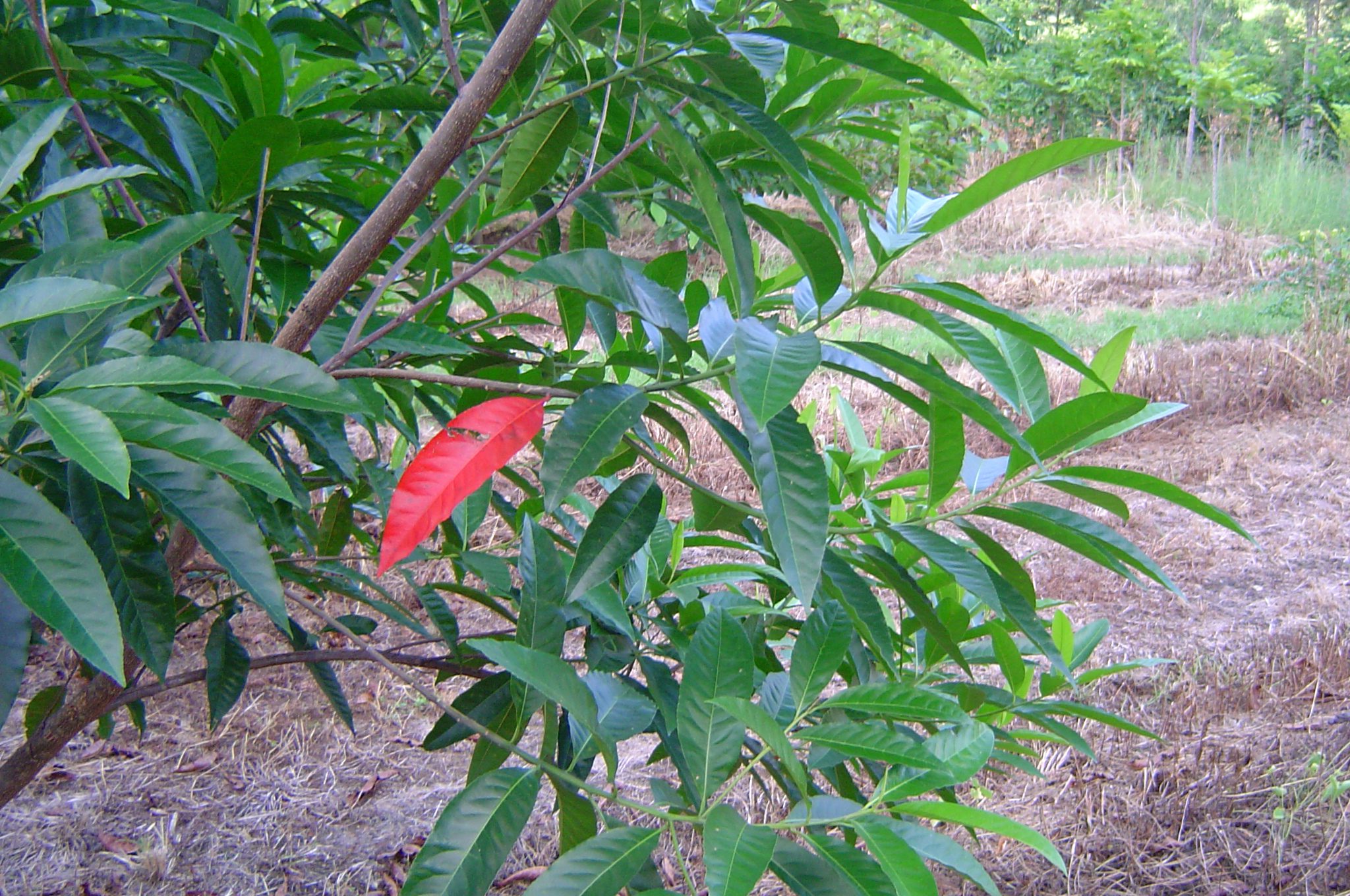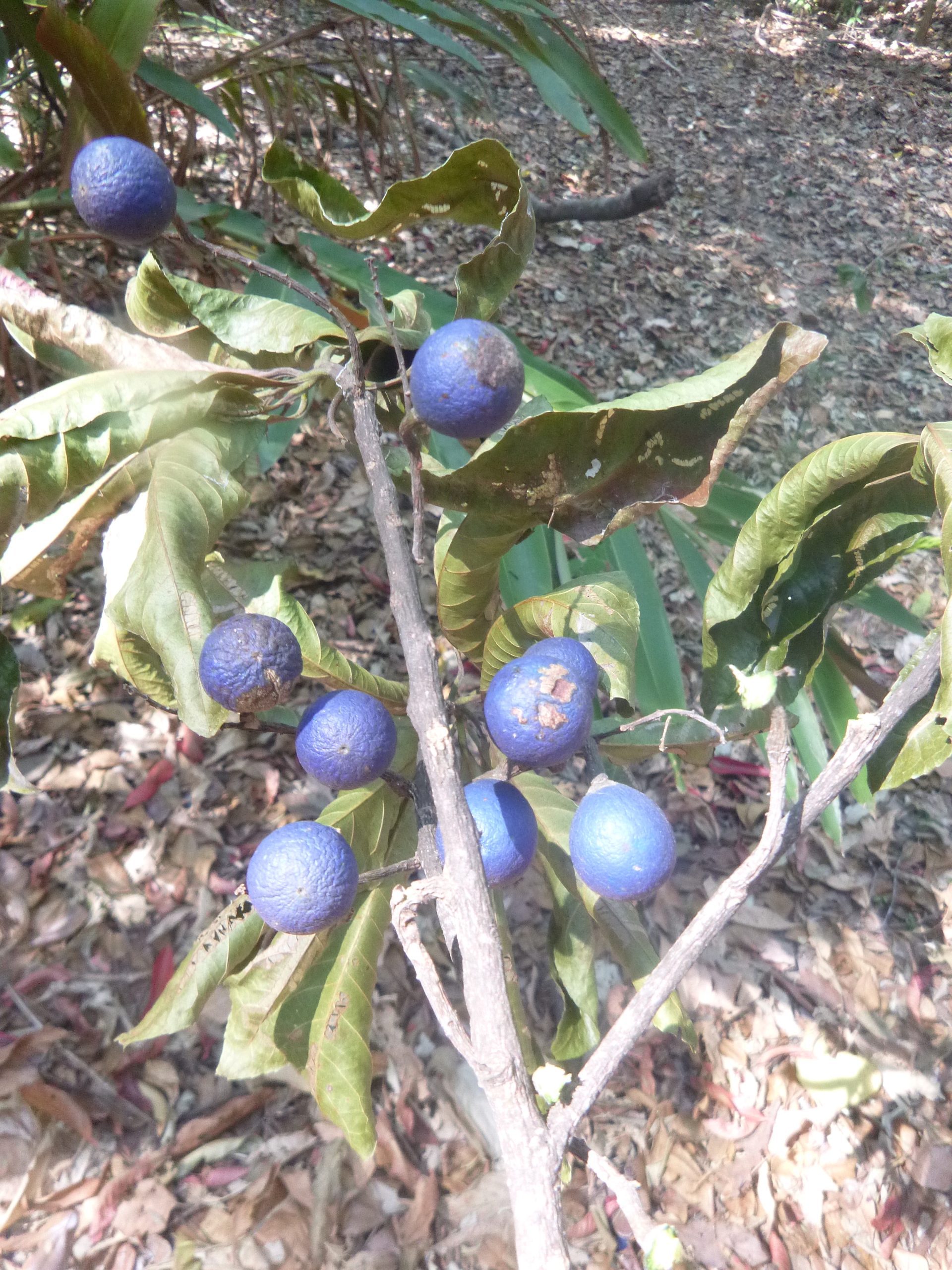Blue quandong
Elaeocarpus grandis, Fam. Elaeocarpaceae


A stately medium to tall tree with a cylindrical trunk and large buttresses; sparse canopy often with a few bright red leaves amongst the green. White grey bark, smooth to slightly wrinkled on older trees.
| Weed Category: | |
| Weed: | No |
| Form or habit: | Med tree, Large Tree |
| Family: | Elaeocarpaceae |
| Leaf: | Simple, alternate, oblong to elliptic, 7-18cm long; margin shallowly and regularly toothed. Smooth, glossy, dark green above and paler below. Old leaves turn bright red. |
| Flower conspicuous: | Conspicuous |
| Flower colour: |
White, Green |
| Flower description: | Racemes of small green white, bell shaped flowers with fringed petals, occurring on the branchlets at the scars where leaves have fallen off. October to March. |
| Fruit conspicuous: | Conspicuous |
| Fruit colour: |
Blue |
| Fruit: | |
| Fruit description: | Sky blue globular drupes, 18-30mm in diameter. Thin outer fleshy layer encloses a large woody stone with a highly pitted surface. Any month of the year. |
| Habitat: | Gallery (riverine or riparian) forest |
| Distribution | Queensland, New South Wales, Northern Territory. |
| Food source for: | Fruit eaten by the eastern tube nosed bat, spectacled flying fox, bush rat, musky rat kangaroo, southern cassowary, rose crowned, wompoo and superb fruit doves, pied imperial, topknot and white headed pigeons, double eyed fig parrot, crimson rosella, noisy pitta, pied currawong, green and spotted catbirds and the satin and tooth billed bowerbirds. Larval food plant of bright cornelian butterfly and the moth Echiomima mythica. Larvae of the clearwing moth Pennisetia igniflua tunnel into the trunk and pupate. |
| Toxicity: | No toxicity known |
| Origin: | Australia |
| Notes: | The woody stones with their highly pitted surface are often found lying beneath the trees and are sometimes used for ornamental purposes. Strikes readily from cuttings. Sow fresh seed and file the stones before sowing, germination can be very slow. Timber is highly valued and has largely been cut out, white to pale brown, light weight but strong. |
| Information sources: | Melzer R. & Plumb J. (2007) Plants of Capricornia. |



